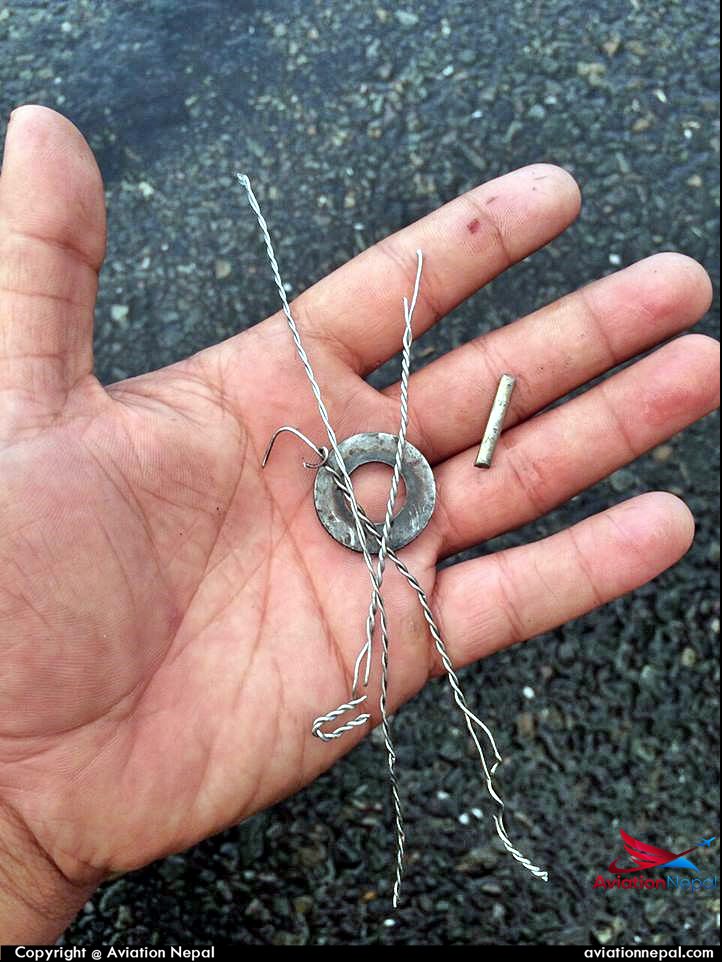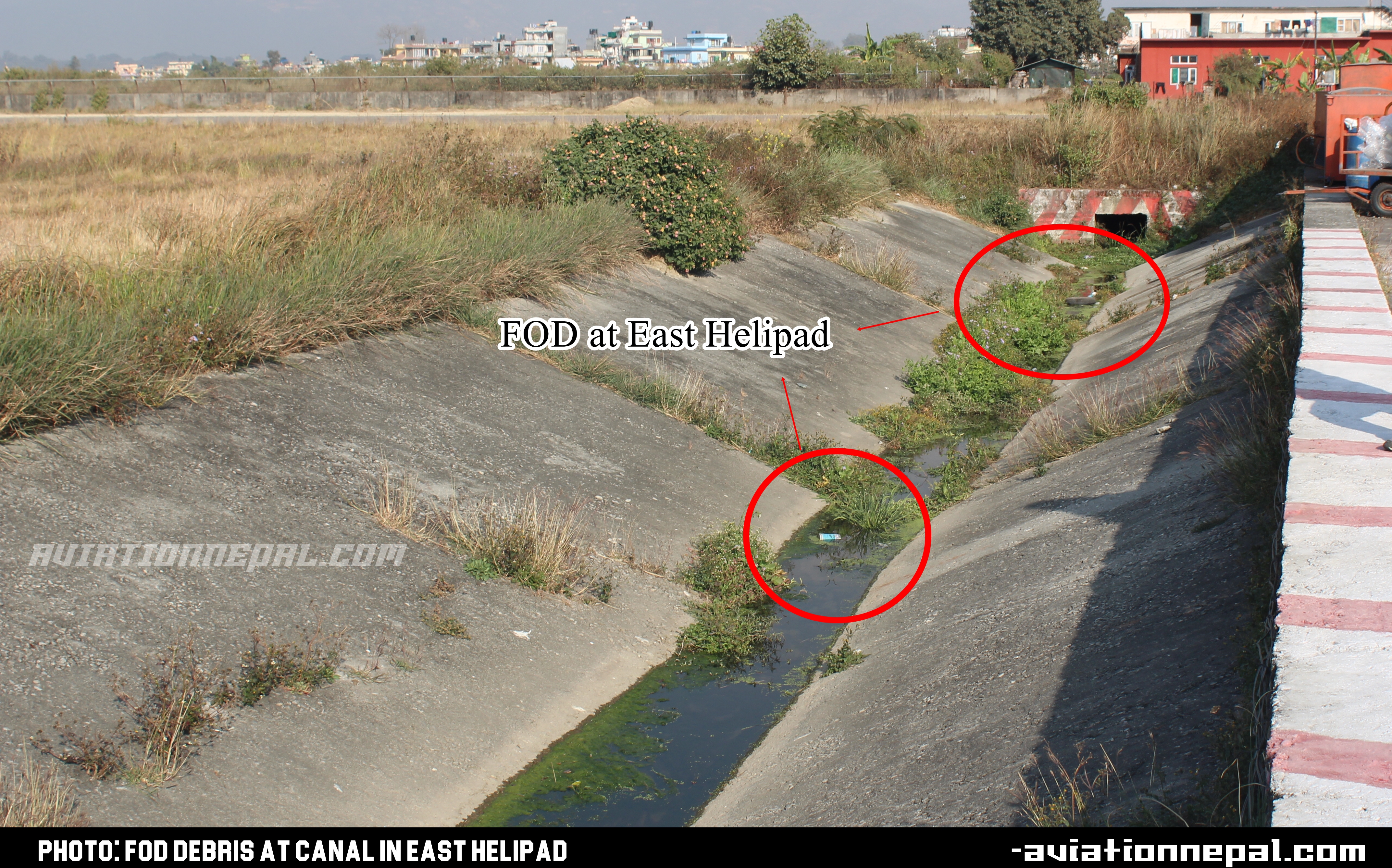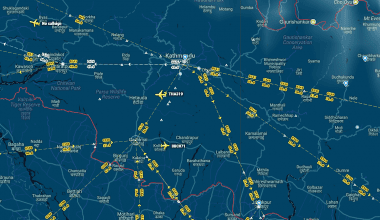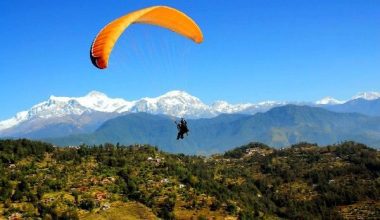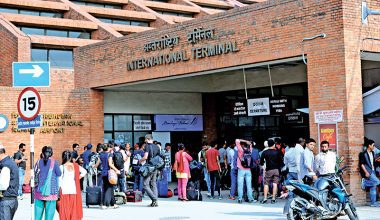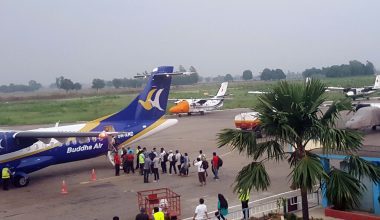Serious Issue: Lingering FOD threatens aerodrome safety at TIA
May 25, 2017-KATHMANDU
Not a new issue on the only international airport of Nepal. Foreign object debris (FOD) is the major problem found inside airport aerodrome. FOD is the object which does not belong to the aircraft and can result fatal incident.
Besides FOD, rubber deposits on the runway, bird strikes, different runway corner cracks and insufficient parking bay have caused terrible problems resulting massive loss and damage. Recently, MA60 belonging to Nepal Airlines suffered a bird strike and encountered damage on it leading edge of wing.
According the ICAO Annex 14, “The surface of pavements (runways, taxiways, aprons and adjacent areas) must be free of any FOD or other objects that can cause damage or halt the flight operation.” It is pretty clear how an aerodrome should be constantly inspected and maintained avoiding external obstacles that do not belong to the air operations area.
As per the CAAN Procedure for Continuing Surveillance Inspection at Aerodromes in chapter 9(g), “The inspector should continuously check for, and remove any FOD in movement areas, aircraft parking areas and loading ramps.” But still the necessary amount of management and surveillance is still lacking in the airport.
So, it is a matter of strong question to CAAN and other respective authorities at the airport on how the airline operates in Nepal are operating their service with such a major issue.
Going back on history, the crash of a Concorde, Air France Flight 4590, at Charles de Gaulle Airport near Paris on 25 July 2000; the investigation team after investigation came on conclusion that the major cause for the fatal crash was FOD as in this case a piece of titanium debris on the runway had been part of a thrust reverser which fell off from a Continental Airlines McDonnell Douglas DC-10 after 4 minutes of takeoff. All 100 passengers and nine crew on board the flight, as well as four people on the ground, were killed.
Bird Strike incident is another major issue in TIA. An expert told when a bird weighing 3 kg slams into an aircraft flying at 150 km per hour, the impact is equivalent to stroking on a 1-sq ft narrow area by a 1,800-kg hammer. This shows that aircraft during take-off and landing are at 90 percent times significantly prone to Bird Hit.
Hence, FOD is hazardous and can cause major incidents resulting in loss of human lives and aircraft property. The airport authority including aircraft operator must work out to solve such a major issues present inside the TIA’s aerodrome. We can find the locking wires, washers etc. with ease inside TIA which could have been present due to the haphazard maintenance of aircraft engines and other parts, wind gust, streaming of rain water and drainage or any other construction activities.
The canal attached to the east helipad at TIA has also been proving to be the hazard for the Helicopters operators. The stone pebbles, sand, locking wires, nuts, washers and other hazardous items appears to be the major FOD inside the airport.
Especially, the jet blast and the high winds of the Helicopters i;e MI-17, etc at East Helipad can create accidents which can harm both the people and the aircraft and also can damage the other aircraft’s engines.
CAAN’s Procedure for Continuing Surveillance Inspection at Aerodromes has mentioned that the necessary amendment for these kinds of major harms is not properly dealt with. The problems are small but are very dangerous to the airport and aircraft along with the passengers.
The FOD damage alone around the world create loss of almost thirteen billion per year to the aviation industry including indirect costs such as aircraft changes, fuel costs, unscheduled maintenance and much more. These losses are quite significant and TIA is unable to realize these possible losses. While the regulations instructs runway detection, maintenance activities, FOD removal using advanced technologies and other evaluations and checks, the proper follow up according to the rules are not seen inside TIA proving the mismanagement and carelessness of security officials. While safety in the air is necessary, the biggest challenge to aviation safety has been on the ground.
